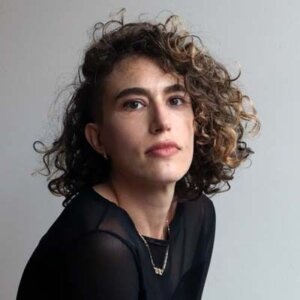A lawsuit, a hotel bombing, an invasion: The moments that shaped Israel — that you don’t know about
As Israel turns 75, we asked journalists, artists, historians and more to tell us about the most important under-the-radar moments of Israeli history
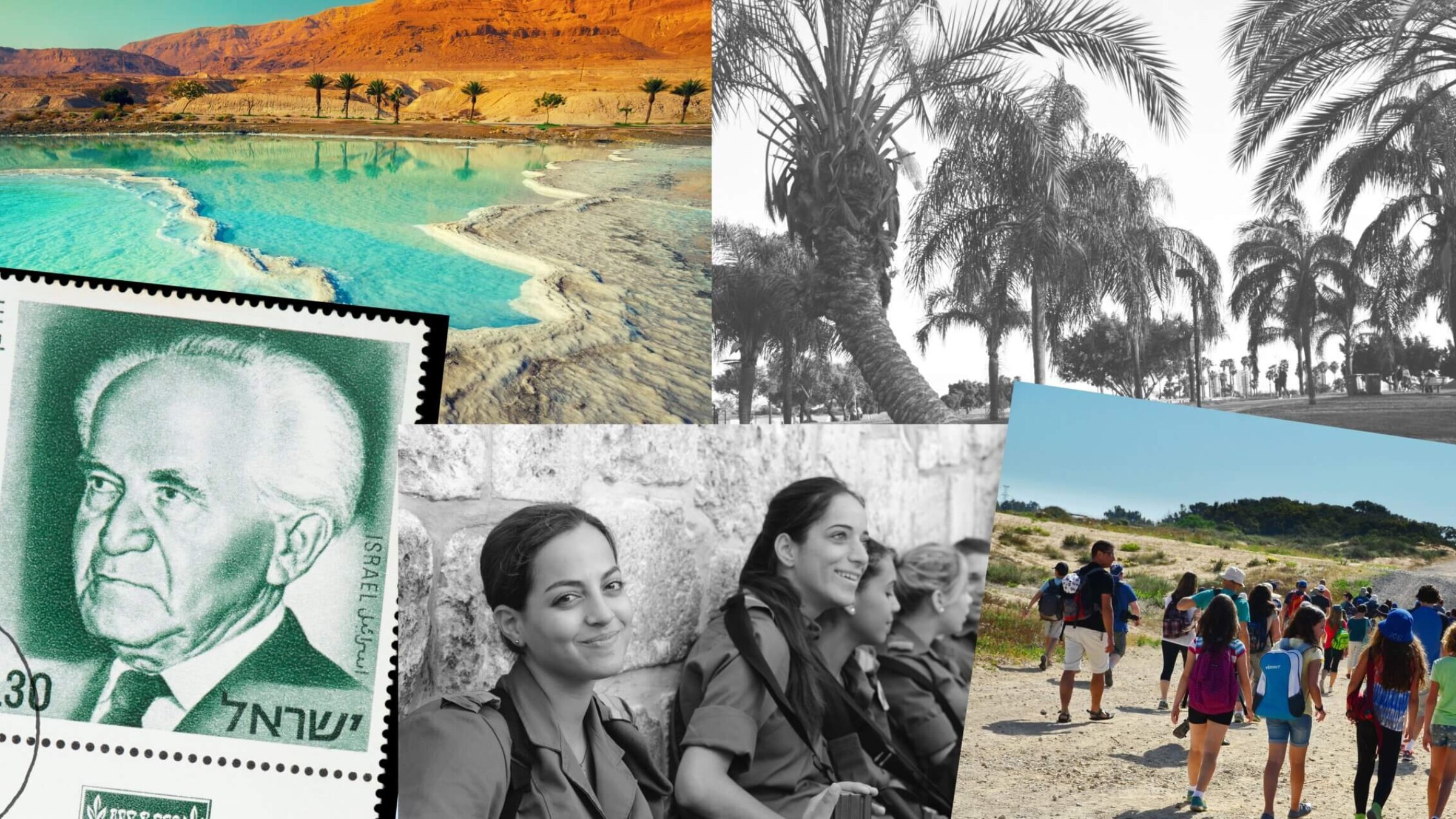
From top left: The Dead Sea, Israeli palm trees, Israeli children hiking, IDF soldiers at the Western Wall, David Ben-Gurion on a stamp. Illustration by Tani Levitt/Getty/istock/Canva
The creation of family incentives that paid Israel’s citizens to have more children.
A female would-be pilot suing the Israeli military for the right to enter the Air Force.
The temporary end of military rule over Palestinians.
Most American Jews have a sense of the big moments that changed Israel’s history: the signing of the Israeli Declaration of Independence in Tel Aviv, say, or the assassination of Yitzhak Rabin.
But as Israel turns 75, the Forward wanted to hear from journalists, scientists, historians, artists and activists about the most important moments in Israel’s brief but monumental history that often get overlooked.
Their answers gave a sense of a Jewish state that is permeable and flexible — perhaps not the first qualities that come to mind when one thinks of Israel. They show that it is possible for Israel to unify, to make amends and to grow (rapidly). It is no surprise that the only Jewish state faces profound challenges on its 75th birthday. The Israel captured in the formative moments collected below, however, may surprise you.
Did we miss a moment you think was formative? Write us at [email protected] with your thoughts.
These responses have been edited for length and clarity.
1945: The formation of the Jewish Resistance Movement
In the aftermath of WWII, Zionist leadership hoped that the British would fulfill their commitment, expressed in the 1917 Balfour Declaration, to the establishment of a Jewish state.
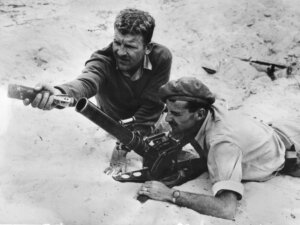
But following the July 1945 parliament elections, the British government continued to enforce the White Paper of 1939, a policy paper that severely limited Jewish immigration to Mandatory Palestine and left survivors of the Holocaust stranded.
As a result — and despite deep ideological differences — the full range of Zionist underground military movements joined together in October of 1945 to form the Jewish Resistance Movement. For the first time, the Haganah, Irgun and Lehi coordinated their operations in an effort to force the British out.
With the future of the Jewish people at stake, this little known, but highly significant demonstration of unity paved the way for the founding of the State of Israel.
Aryeh Halivni, founder and creator of Toldot Israel
1966: The temporary end of military rule over Palestinians
On Nov. 8, 1966, Israeli Prime Minister Levi Eshkol formally ended military law over the Palestinians in Israel — a brief, rarely acknowledged period of hope in Israel’s history.
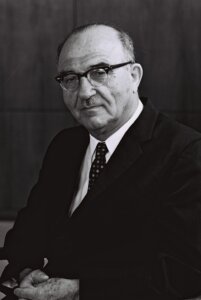
From 1948 until 1966, the Palestinians who remained on the Israeli side of the Green Line — a demarcation that served as Israel’s de facto border with its neighbors — lived under formal military rule, with severe restriction on their movement, and broad political censorship. Scholars have recently argued that military rule was only lifted after steps were taken to ensure that Palestinians could not return to the homes that they had fled or been expelled from after Israel declared independence in 1948.
Regardless, Eshkol’s decision took profound political courage and imagination (and was still relatively unpopular among many of his advisers).
It was a moment when there was real potential for equality and democracy. As hundreds of thousands of Israelis have filled the streets nightly since March, protesting to save democracy and resist the judicial overhaul, I imagine what it would be like to have an Israeli politician with Eshkol’s leadership.
Avner Gvaryahu, co-executive director, Breaking the Silence
1974: The implementation of the family incentives policy
Projections from Israel’s Central Bureau of Statistics suggest that the Israeli population, which currently numbers nearly 10 million, will double over the next 30 years, making Israel the most crowded country on the planet save for Bangladesh.
That’s no accident.
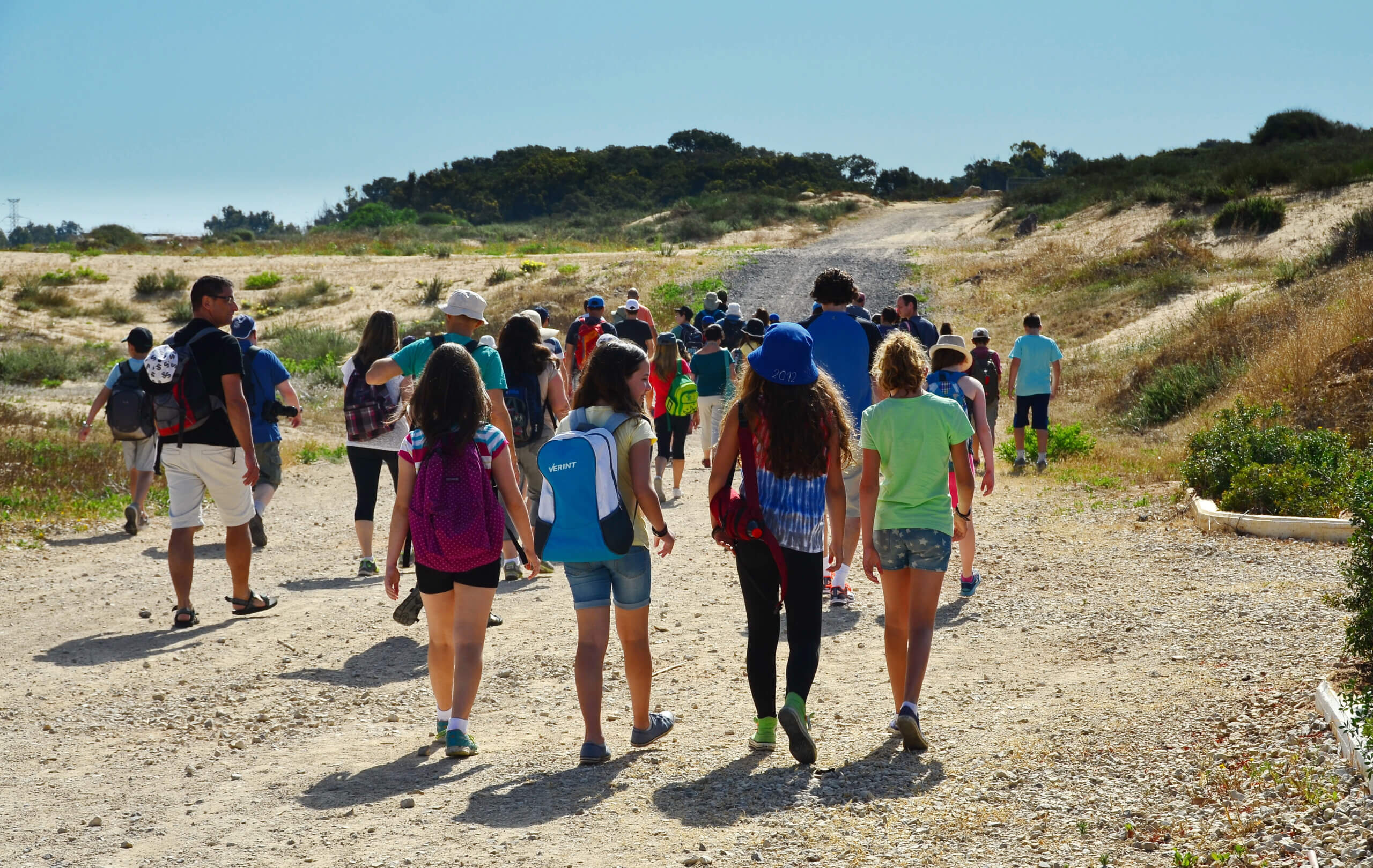
A special government commission in 1974, headed by Tel Aviv University economics professor Haim Ben Shachar, created a system — in place to this day — that allocates points for monthly child allowances based on family size. The policy applies to Palestinian citizens of Israel in addition to Jewish Israelis. A family’s first child is awarded 1 point, for an additional 164 shekels; then for second through fourth children, 1.25 points, or 207 shekels for each child. Families get paid more to make babies — the more, the better.
With 3.1 children per family on average, Israel has the highest fertility rate in the Western world by far. But the resulting rapid population growth has come at an economic, ecological and social price, with the quantity of life starting to compromise the quality of life. In a part of the world where every meter of land matters, rapid population growth will only exacerbate existing scarcity challenges in Israel.
Alon Tal, professor of public policy at Tel Aviv University and former member of Knesset
1996: The lawsuit that made it possible for women to apply to IDF pilot courses
In 1996, the Israeli Supreme Court ruled that preventing women from applying to a pilot course in the Israeli Defense Forces is discrimination after Alice Miller sued the military for the right to take the pilot’s test.
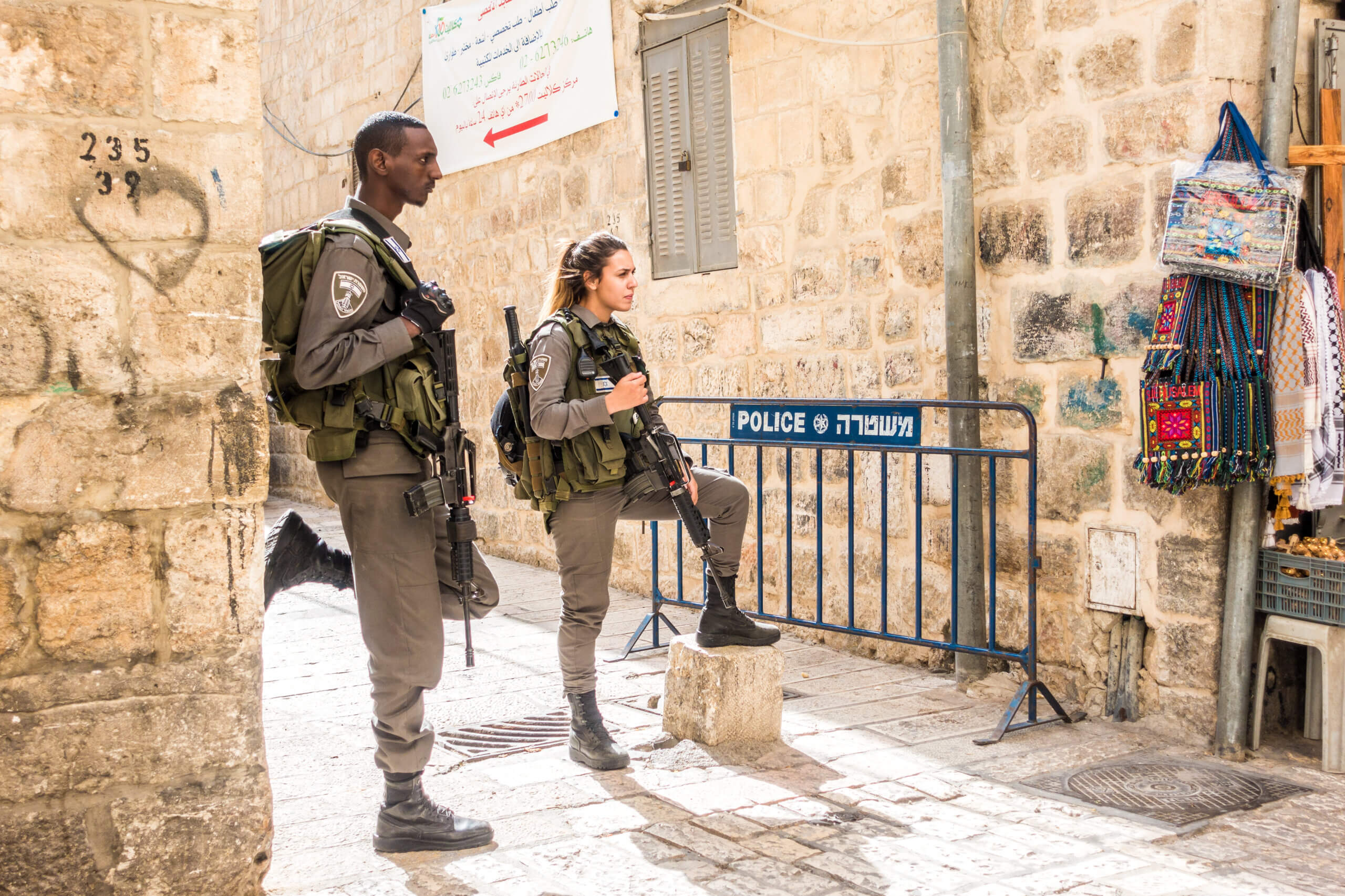
While Miller did not ultimately make it through the training to become a pilot, her lawsuit led to one of the most significant rulings on the right to gender equality in Israel. In January 2000, an amendment to the Security Service Law was made that permanently enshrined gender equality in the military, stating that every woman has an equal right to fill any position in the IDF, unless there is a limitation created by the nature or essence of the position.
Miller opened up various positions for women in the IDF which until then had been reserved for men only, including in the navy, the air defense system, the intelligence battalion of the engineering corps and in the border guard. Her lawsuit pushed the IDF to be more gender inclusive, allowing Israel’s military — an institution that a majority of Israeli citizens participate in — to be truly reflective of its population.
Margalit Lenk, activist
2002: The Park Hotel suicide bombing
The two-state solution died the night of March 27, 2002, along with 30 Israelis who were murdered by a Palestinian suicide bomber during Passover Seder at the Park Hotel in Netanya.
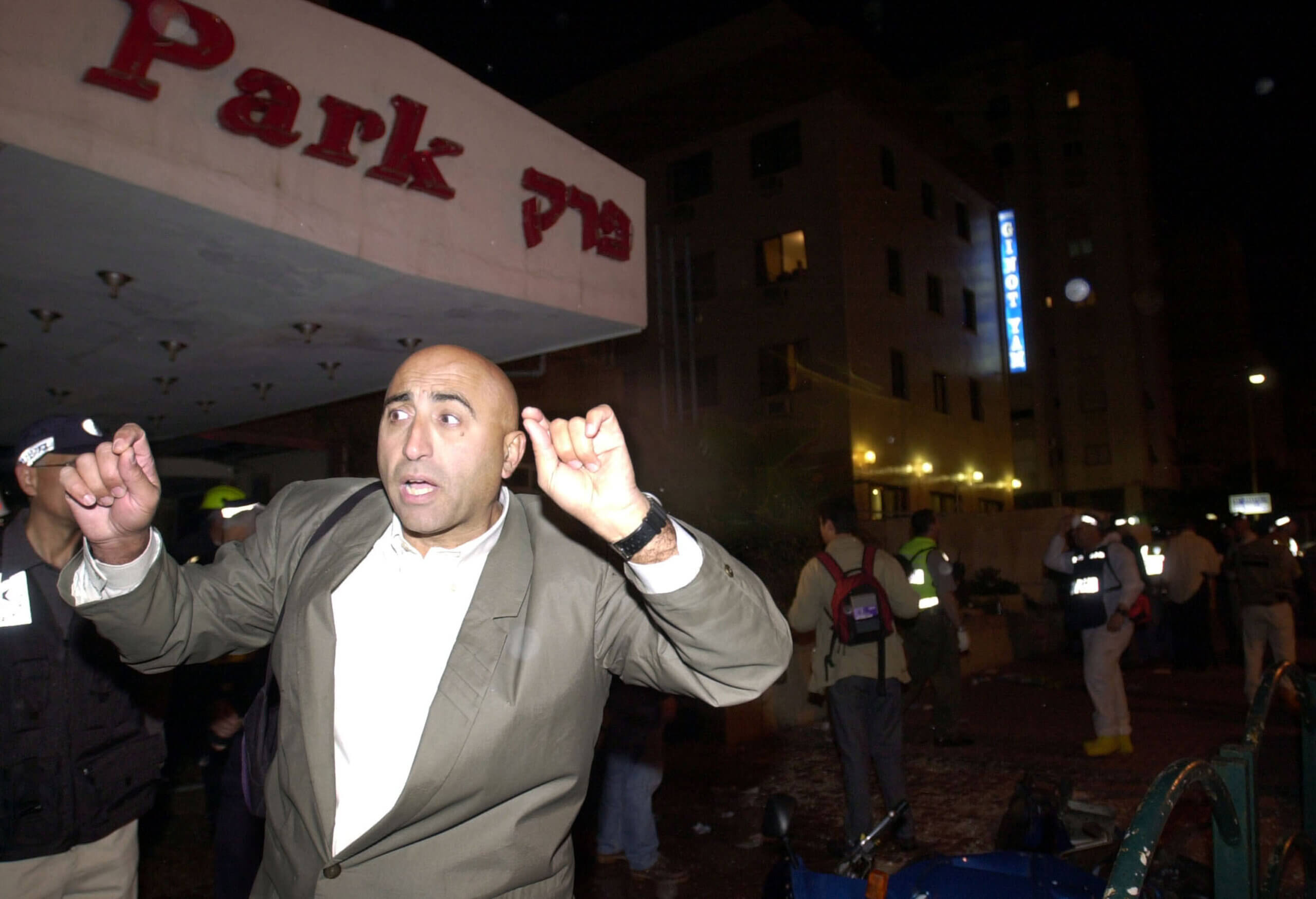
The Park Hotel terror attack was a critical turning point in the relations between Israelis and Palestinians, and the deadliest attack on Israelis during the Second Intifada. March 2002 was the deadliest month of that Intifada for Israelis, with 135 people killed. A high rate of suicide bombings, culminating with that of the Park Hotel, forced the IDF to take drastic measures to stop the violence. Israel launched Operation Defensive Shield within two days of the Park Hotel bombing, in which the IDF mobilized over 20,000 reservists and took over all of the Palestinian cities in the West Bank. Hundreds of Palestinians were killed.
The Park Hotel suicide bombing marked the end of the dream of a peace process. The destruction of Palestinian Authority infrastructure during Operation Defensive Shield — the World Bank estimated $361 million worth of damage — worsened the reputation of then P.A. President Yasser Arafat among Palestinians, and allowed Hamas to grow in popularity. Israelis were scared and exhausted by the repeated suicide bombings.
Years later, the negotiations between Israel and the PLO were renewed, but they lacked the hope that people on both sides had prior to the Park Hotel attack, and ultimately proved unsuccessful.
Avi Issacharoff, Middle East analyst and co-creator of Fauda
2003: The U.S. invasion of Iraq
The 2003 U.S.-led invasion of Iraq had dramatic repercussions for Israel. Some have erroneously argued that the invasion was driven by Israel’s security needs, but it was in fact viewed skeptically by former Israeli Prime Minister Ariel Sharon and other senior officials who saw Iran as Israel’s primary threat.
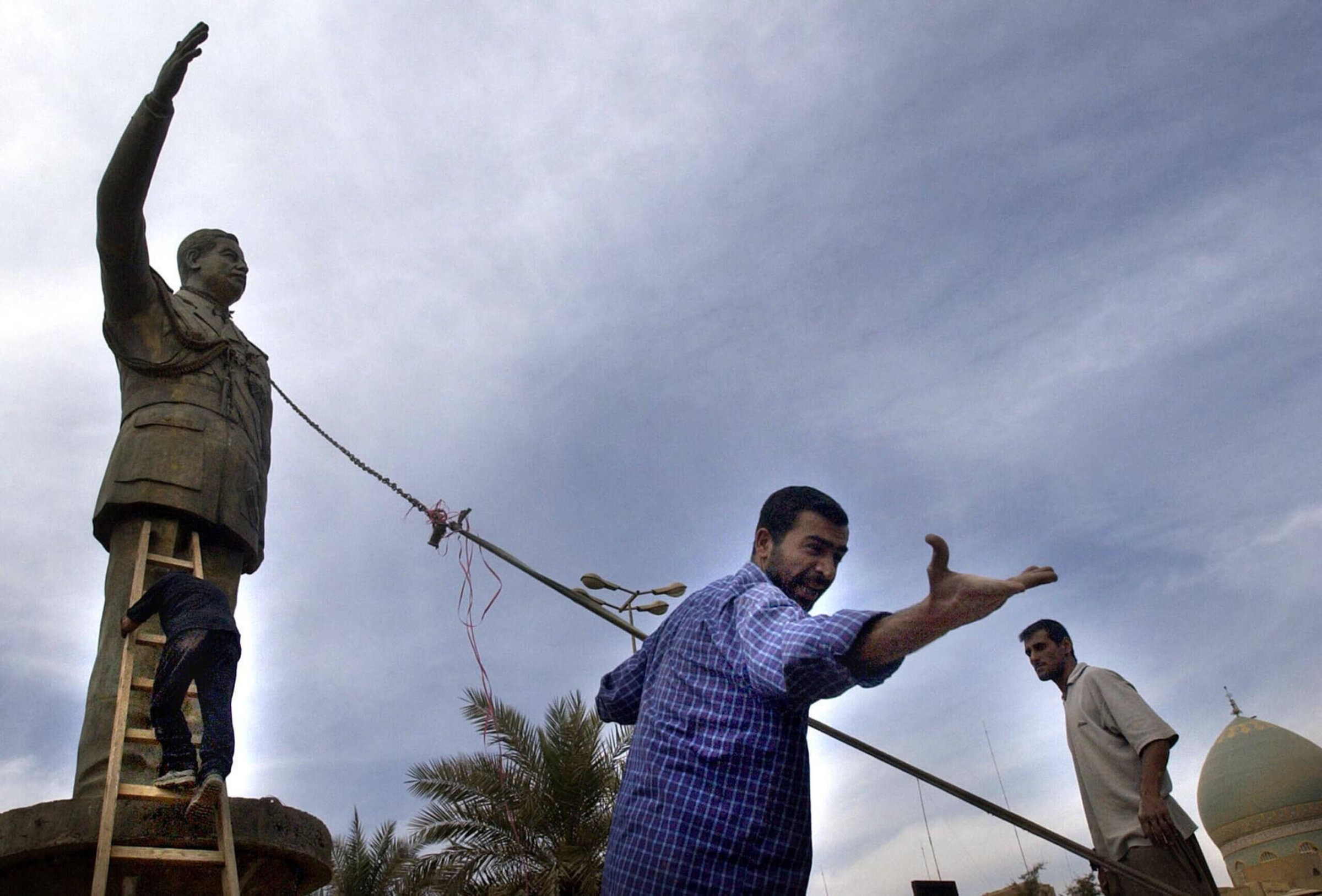
The overthrow of Saddam Hussein, which upended a decade of American strategy to contain both Ba‘athist Iraq and Revolutionary Iran, invited Iran to entrench itself in Iraq politically and economically. Iraqi militants strengthened Iran’s “Axis of Resistance” — an anti-Israel and anti-Western network of allied political parties and armed groups.
With Iraq in chaos post-invasion, Iran-backed groups like Hezbollah, Hamas and Palestinian Islamic Jihad have increased strategic territory from which to harry Israel’s borders and increased resources to fund terror attacks aimed at Israeli citizens. The U.S. invasion not only destabilized Iraq, but amplified Iran’s “Axis,” forcing Israel to contend with more, and better funded, security risks. The deleterious ramifications of the invasion still threaten Israel’s borders 20 years later.
Rachel Kantz Feder, historian at Tel Aviv University
2005: The imposition of the first Gaza blockade
My grandfather bought a farm shortly before 1948 in his ancestral village, Hamama. He had Jewish neighbors with whom he exchanged knowledge about agriculture. He refused to leave after Israel was founded — until, 167 days after Israel declared independence on May 14, the IDF launched operation Yoav, depopulating his village and leveling it to the ground. He became a penniless refugee in Gaza’s Shati camp. 19 years later, Israel invaded and captured Gaza, and he was made a refugee again in Egypt with his children.

It wasn’t until 1994, after the signing of the Oslo Accords, that he was allowed to return. He died in the early years of the Gaza blockade, which has been permanently in place since 2007 after being temporarily imposed in 2005. The fear of another Nakba — another experience of displacement, loss of home, community and safety — never left him, nor my late father, nor any other Palestinian I know.
It’s because of this experience, in my family, that I see Israel’s blockade on Gaza as one of the most significant moments in Palestinian history with Israel. It showed me that the Nakba — in Arabic, the “catastrophe” of Palestinian displacement — is an ongoing process.
The blockade on Gaza is an attritional form of violence: invisible to the outside world, yet crushing. Gaza has been made so unlivable, with so little future to offer its youth, that many are leaving to become refugees again, particularly in Europe, in desperation for a glimpse of a normal life.
